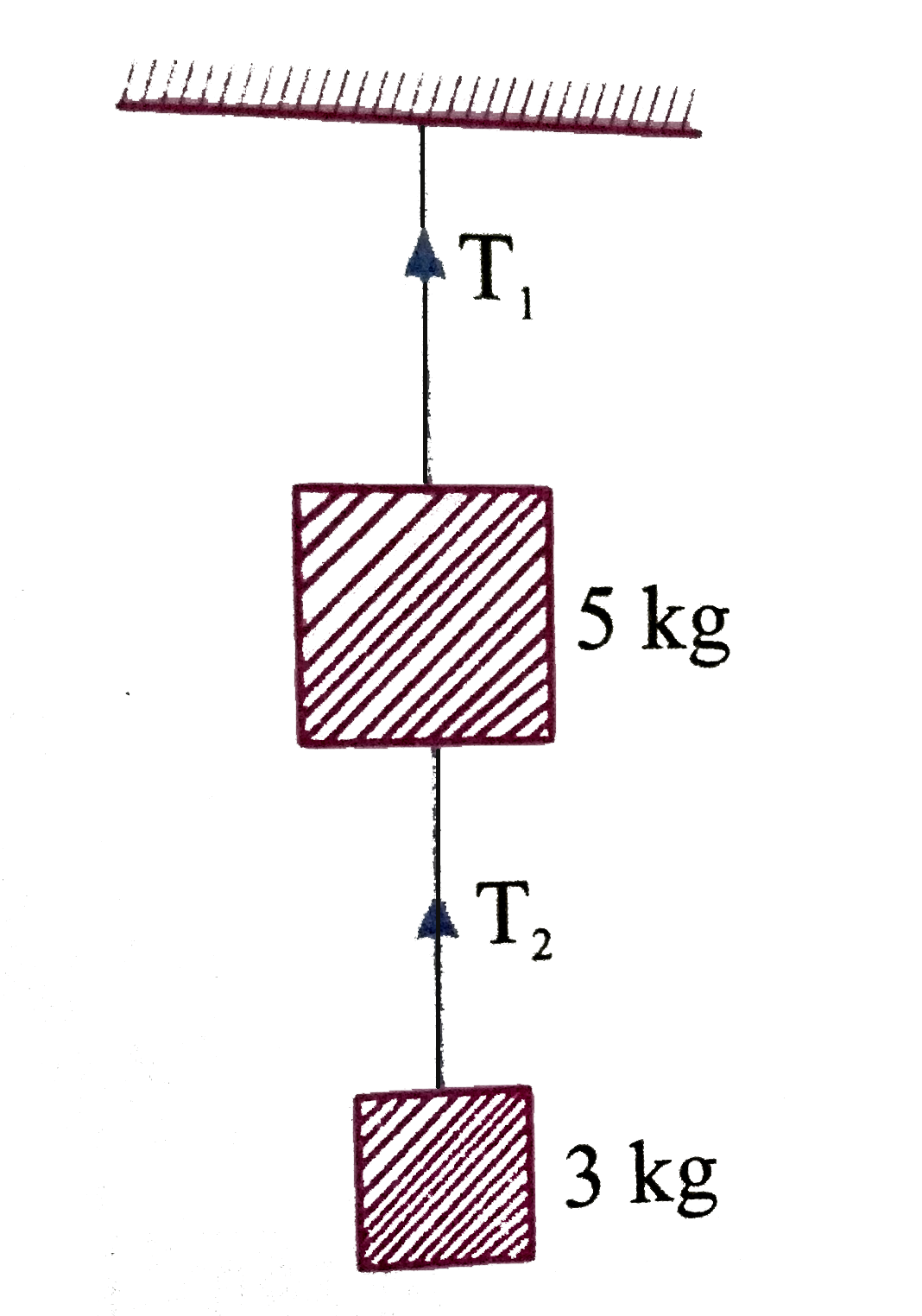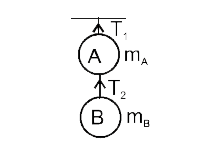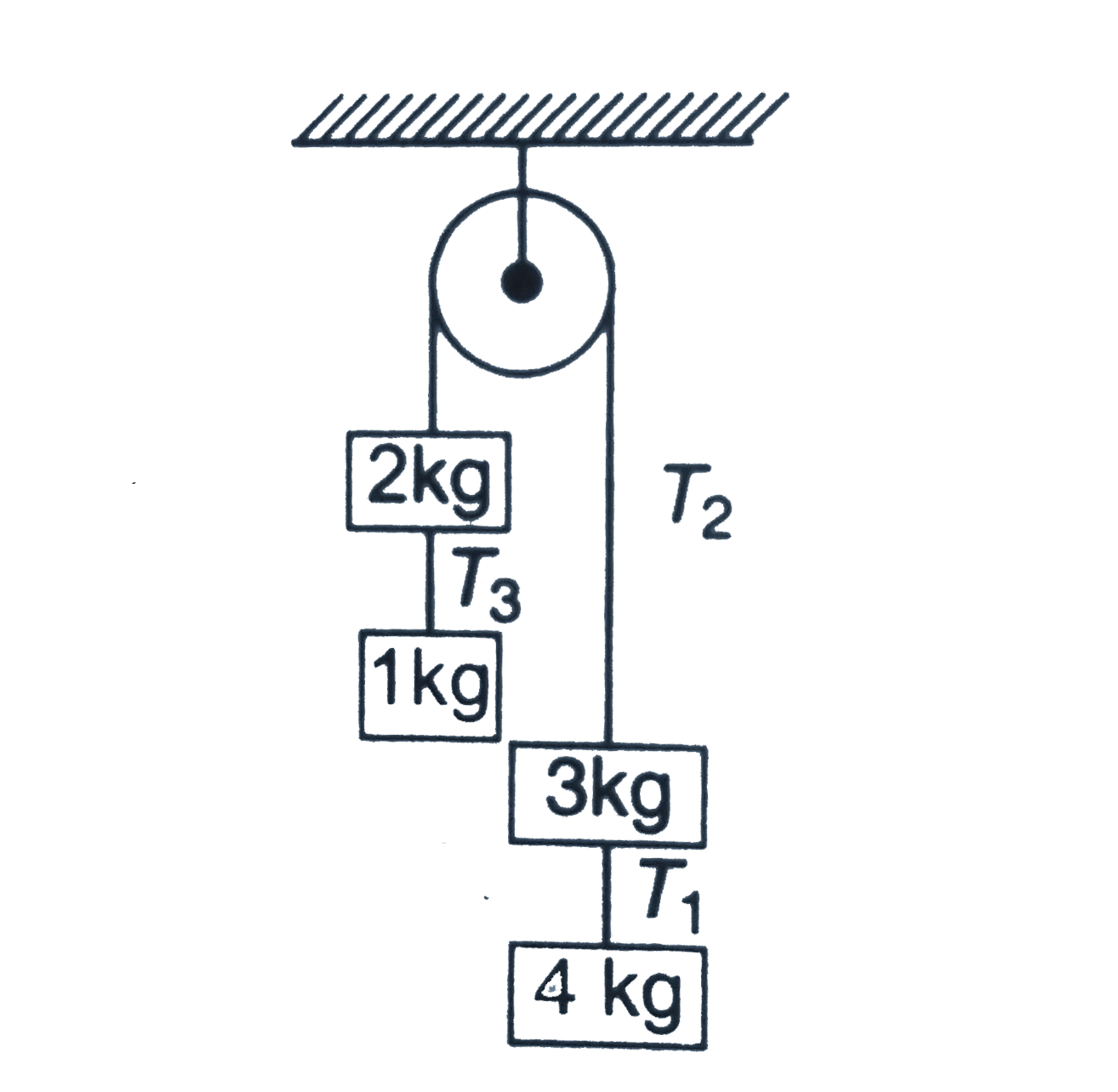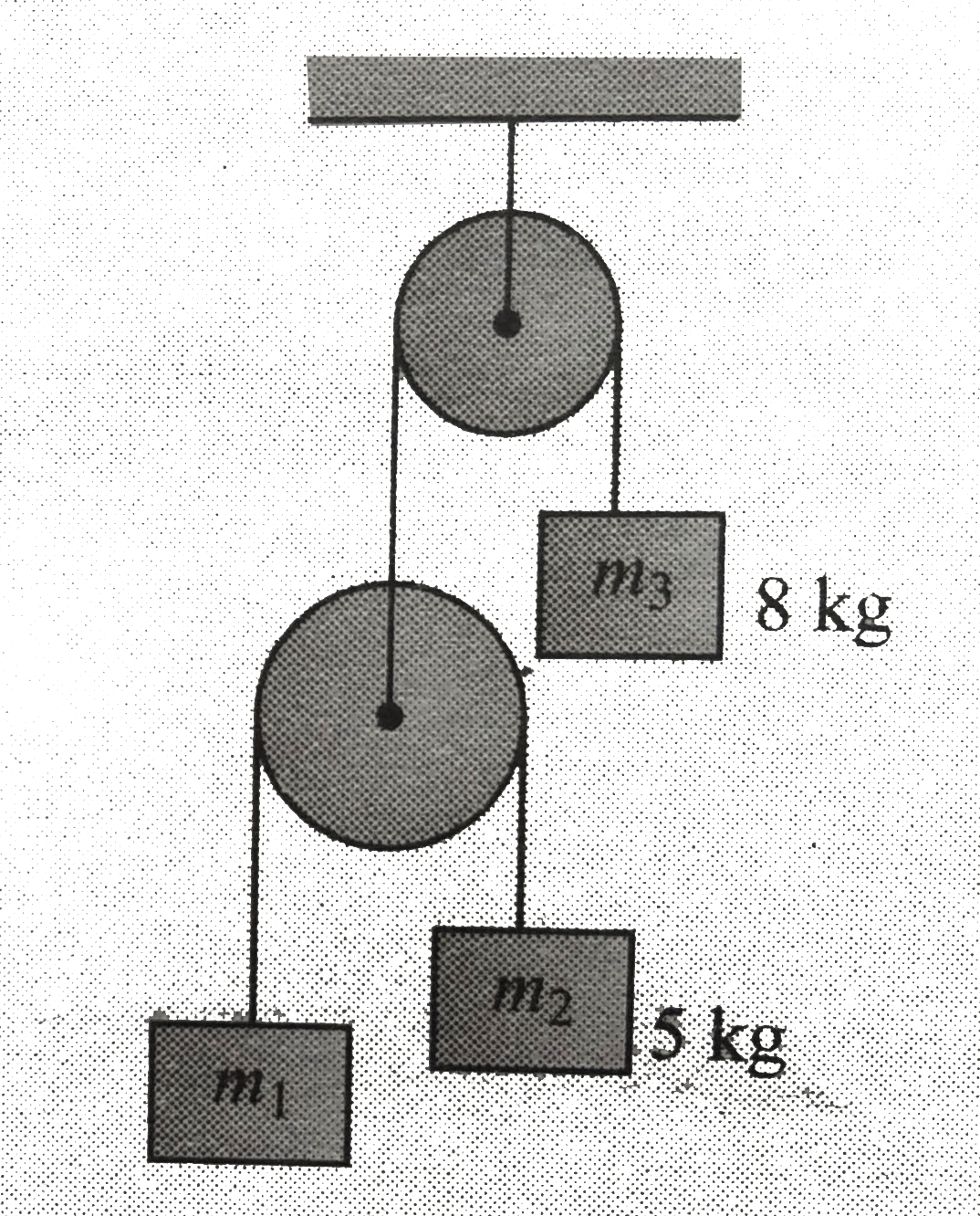The masses m1m2 and m3 of the three bodies shown in fig . Are 5 , 2 and 3 kg respectively Calculate the valuse of tension T1T2 and T3 when (i) the whole system is going upward with an acceleration of 2m/s2 (ii) the whole system is stationary (g=9.8m/s2) .
 .
.
29.4 N, 98 M, 98 N
98 N, 49 N, 29.4 M
118 N, 59 N, 35.4 N
35.4 N, 118 N, 59 N
The correct Answer is:C
Step by step video & image solution for The masses m_(1) m_(2) and m_(3) of the three bodies shown in fig . Are 5 , 2 and 3 kg respectively Calculate the valuse of tension T_(1) T_(2) and T_(3) when (i) the whole system is going upward with an acceleration of 2 m//s^(2) (ii) the whole system is stationary (g=9.8 m//s^(2)) . . by Physics experts to help you in doubts & scoring excellent marks in Class 12 exams.
Updated on:21/07/2023Topper's Solved these Questions
Similar Questions
Two masses of 5kg and 3kg are suspended with help of massless inextensible strings as shown in figure. Calculate T1and T2 when whole system is going upwards with acceleration =2m/s2(useg=9.8ms−2).

View SolutionThe masses m1m2 and m3 of the three bodies shown in fig . Are 5 , 2 and 3 kg respectively Calculate the valuse of tension T1T2 and T3 when (i) the whole system is going upward with an acceleration of 2m/s2 (ii) the whole system is stationary (g=9.8m/s2) .
 .
.
View Solution
Knowledge Check
Two masses of 5kg and 3kg are suspended with help of massless inextensible strings as shown in figure. Calculate T1and T2 when whole system is going upwards with acceleration =2m/s2(useg=9.8ms−2).
 AT1=50N,T2=38NBT1=35.4N,T2=94.4NCT1=94.4N,T2=35.4NDT1=0N,T2=35.4N
AT1=50N,T2=38NBT1=35.4N,T2=94.4NCT1=94.4N,T2=35.4NDT1=0N,T2=35.4NA lift of mass 100 kg is moving upwards with an acceleration of 1 m/s2. The tension developed in the string, which is connected to lift is (g=9.8m/s2)
A980 NB1080 NC1100 ND1000 NTwo objects A and B of masses mA and mB are attached by strings as shown in fig. If they are given upward acceleration then the rato of tension T1:T2 is-
 A(mA+mB)/mBB(mA+mB)/mACmA+mBmA−mBDmA−mBmA+mB
A(mA+mB)/mBB(mA+mB)/mACmA+mBmA−mBDmA−mBmA+mB
Two masses of 5 kg and 3 kg are suspended with help of mass less inextensible string as shown. Calculate T1andT2 when system is going upwards with acceleration m/s2.(Use g=9.8m/s2).

View SolutionIn the figure shown, find acceleration of the system and tenslons T1,T2andT3(Take=10m/s2)

View SolutionThree blocks m1,m2, and m3 are arranged as shown in fig. if m2=5kg and m3=8kg, at what value of m1 will 8kg mass be at rest?

View SolutionTwo masses m1 and m2 are accelerated uniformly on a frictionless surface as shown in figure given below. The ratio of the tensions T1T2 is:

View SolutionThe mass of a lift is 500 kg. What will be the tension in its cable when it is going up with an acceleration of 2.0 m/s2 ? (Take, g = 9.8 m/s2)
View Solution
